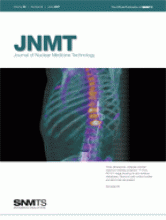Abstract
Blood volume studies using the indicator dilution technique and radioactive tracers have been performed in nuclear medicine departments for over 50 y. A nuclear medicine study is the gold standard for blood volume measurement, but the classic dual-isotope blood volume study is time-consuming and can be prone to technical errors. Moreover, a lack of normal values and a rubric for interpretation made volume status measurement of limited interest to most clinicians other than some hematologists. A new semiautomated system for blood volume analysis is now available and provides highly accurate results for blood volume analysis within only 90 min. The availability of rapid, accurate blood volume analysis has brought about a surge of clinical interest in using blood volume data for clinical management. Blood volume analysis, long a low-volume nuclear medicine study all but abandoned in some laboratories, is poised to enter the clinical mainstream. This article will first present the fundamental principles of fluid balance and the clinical means of volume status assessment. We will then review the indicator dilution technique and how it is used in nuclear medicine blood volume studies. We will present an overview of the new semiautomated blood volume analysis technique, showing how the study is done, how it works, what results are provided, and how those results are interpreted. Finally, we will look at some of the emerging areas in which data from blood volume analysis can improve patient care. The reader will gain an understanding of the principles underlying blood volume assessment, know how current nuclear medicine blood volume analysis studies are performed, and appreciate their potential clinical impact.







